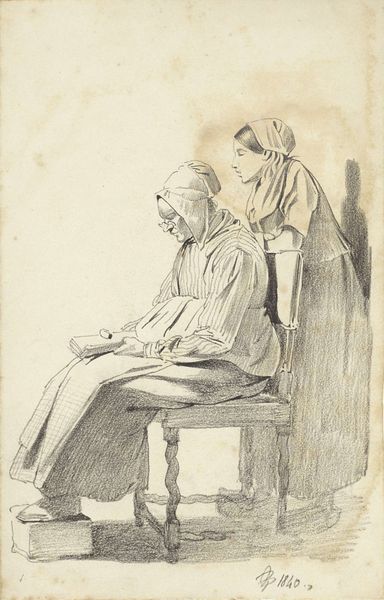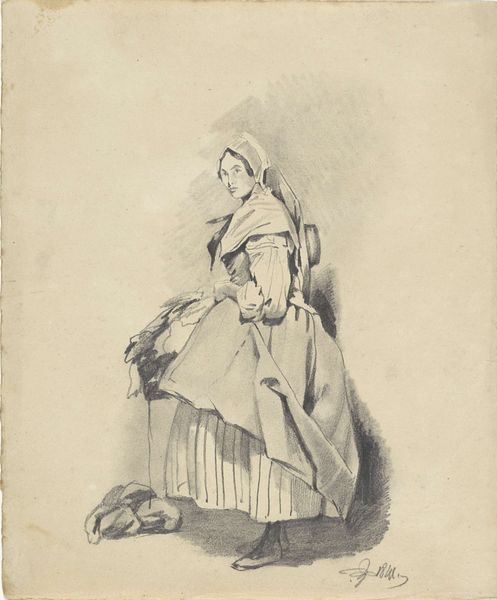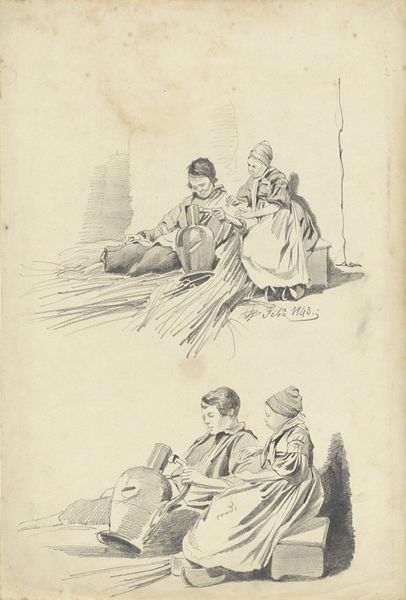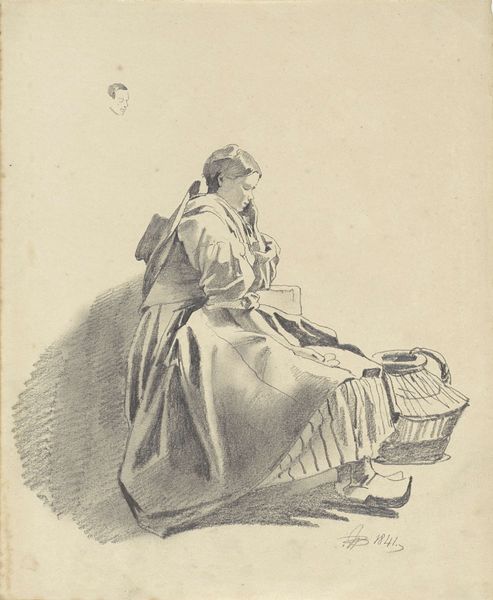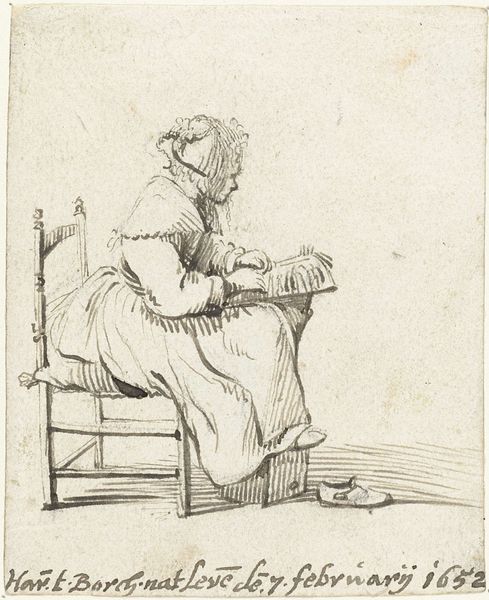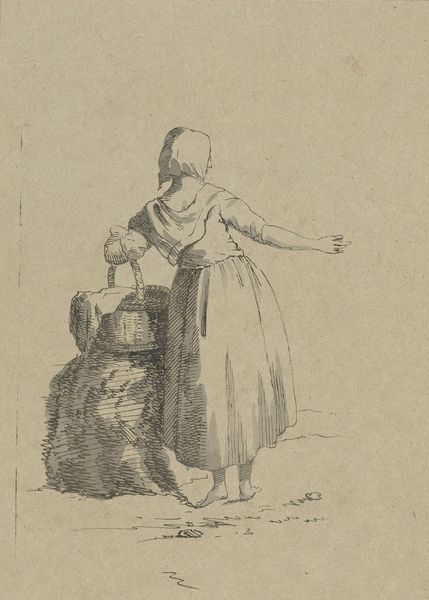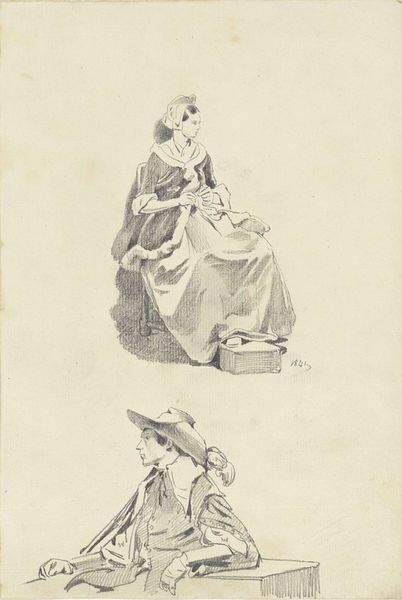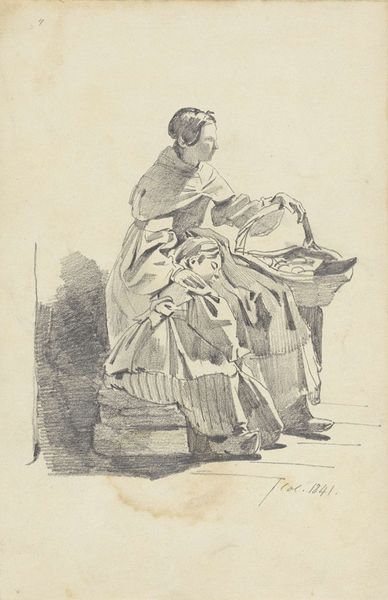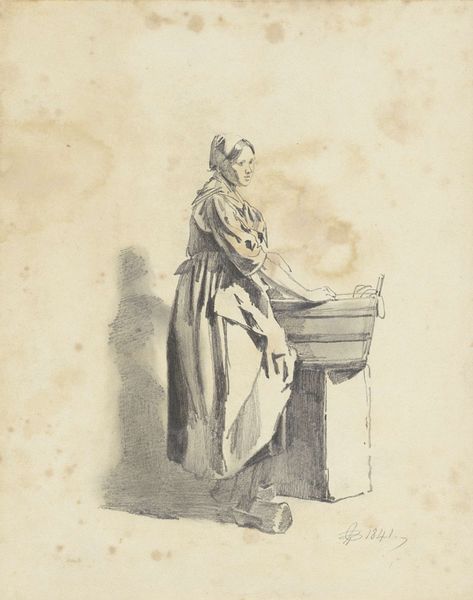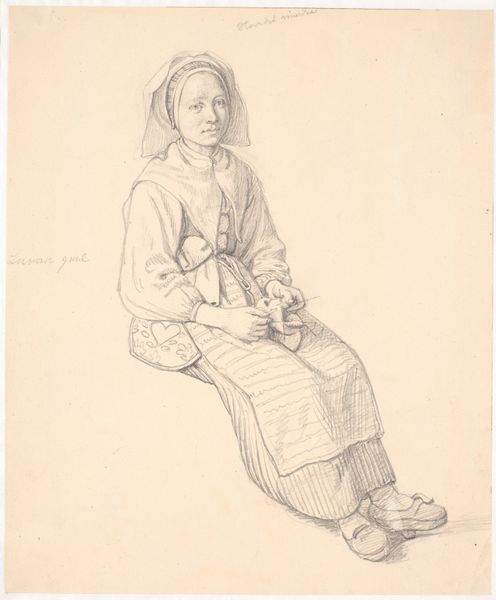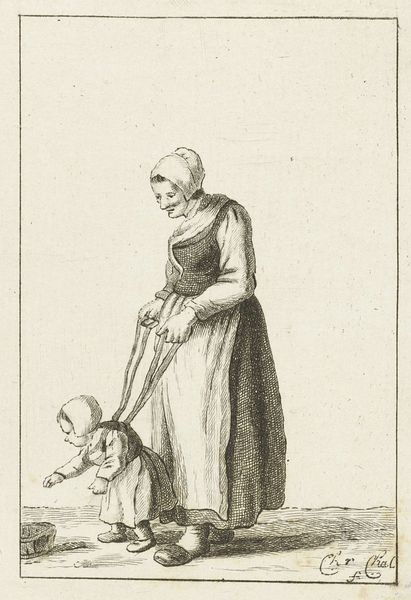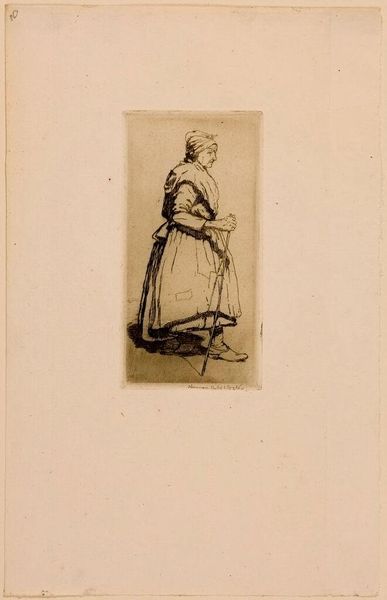
drawing, paper, pencil
#
portrait
#
pencil drawn
#
drawing
#
pencil sketch
#
paper
#
pencil
#
sketchbook drawing
#
pencil work
#
genre-painting
#
academic-art
#
realism
Dimensions: height 201 mm, width 129 mm
Copyright: Rijks Museum: Open Domain
Editor: Here we have Pieter van Loon’s "Young Woman Standing Behind a Seated Reading Old Woman," made with pencil on paper in 1840. It’s such a tender scene. What strikes me is the subtle contrast between the generations. How do you interpret this work? Curator: This seemingly simple genre scene offers a glimpse into the dynamics of gender and age within 19th-century domesticity. The young woman’s presence behind the seated elder reading prompts a consideration of roles and power. Who controls access to knowledge? Whose labor sustains the other? How might their identities be shaped and constrained by societal expectations of womanhood in this period? Editor: I hadn't really thought of it that way, about the control of knowledge. Is it possible that the younger woman is also learning something, maybe just by observing? Curator: Precisely. The drawing invites speculation. Is this an act of care, servitude, or silent apprenticeship? Perhaps the younger woman is being denied direct access to literacy, instead relegated to observing and absorbing knowledge indirectly. Think about the barriers women faced in accessing education during this time. Editor: That's such an interesting perspective. The drawing itself felt so straightforward. I didn't consider these deeper social issues. Curator: It's a reminder that art isn't created in a vacuum. Visual representation reinforces or challenges social norms. Exploring that tension is a central question for many art historians. Editor: This really shifts how I understand genre scenes. I see that everyday moments can contain so many layered stories and social commentaries. Curator: Absolutely. Recognizing the potential for art to critique the social dynamics within historical and contemporary culture gives art real power to create new discussions and hopefully more egalitarian conditions.
Comments
No comments
Be the first to comment and join the conversation on the ultimate creative platform.
